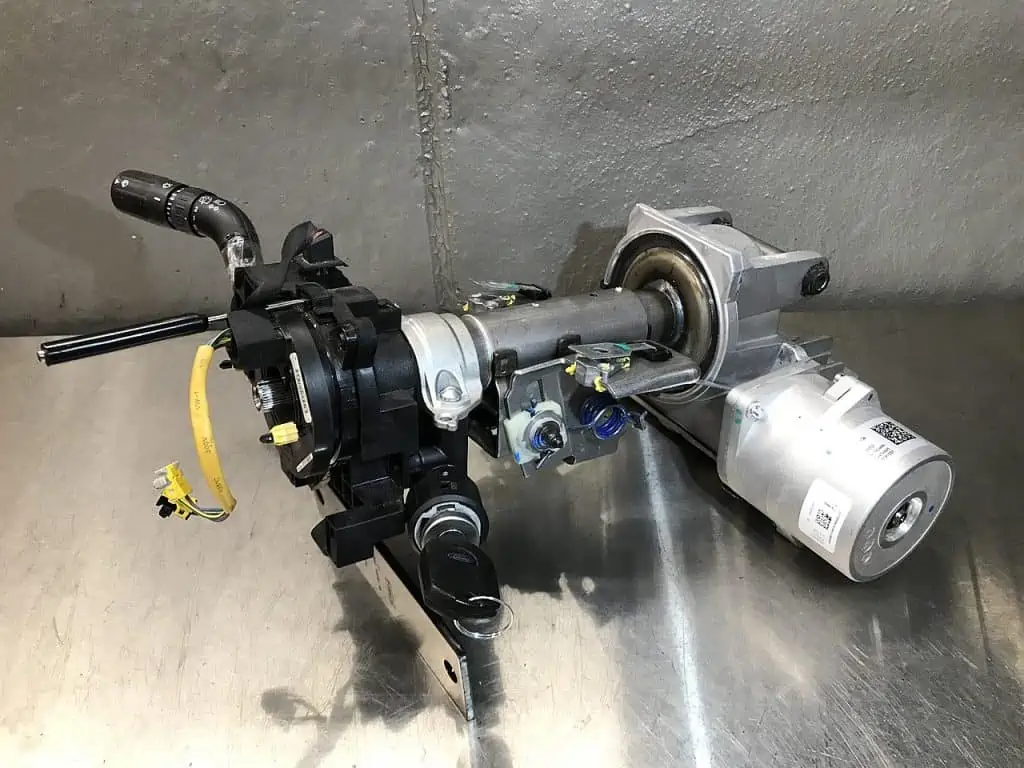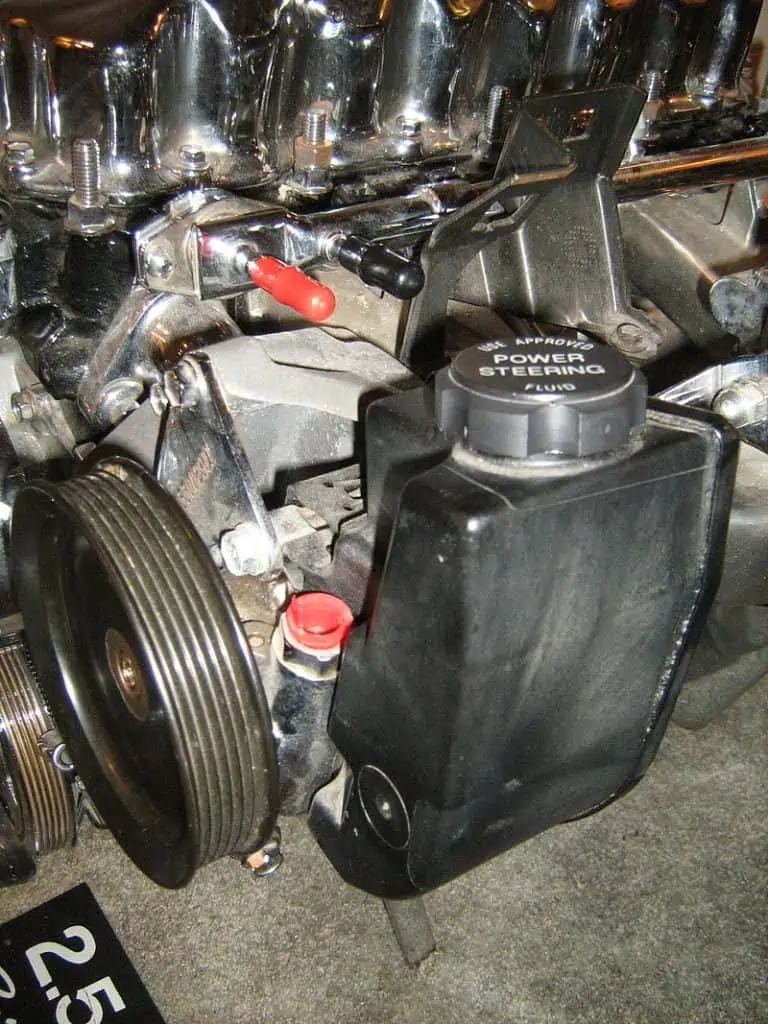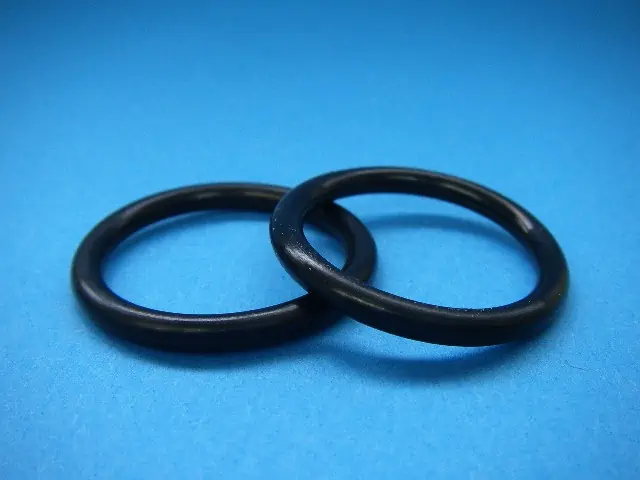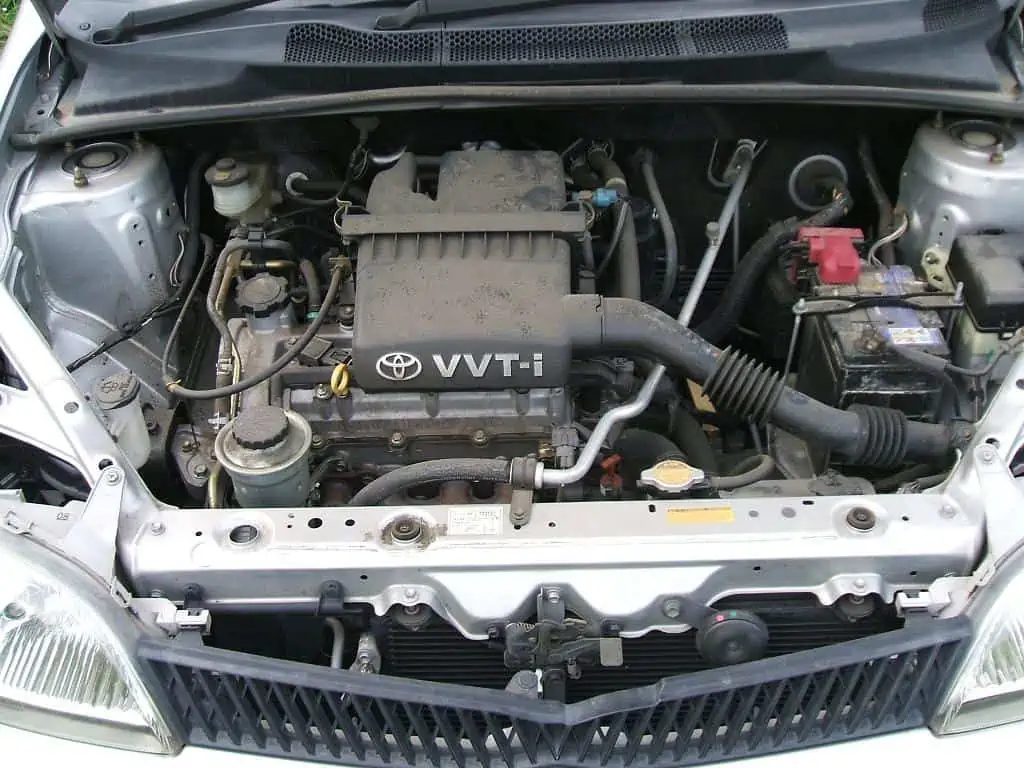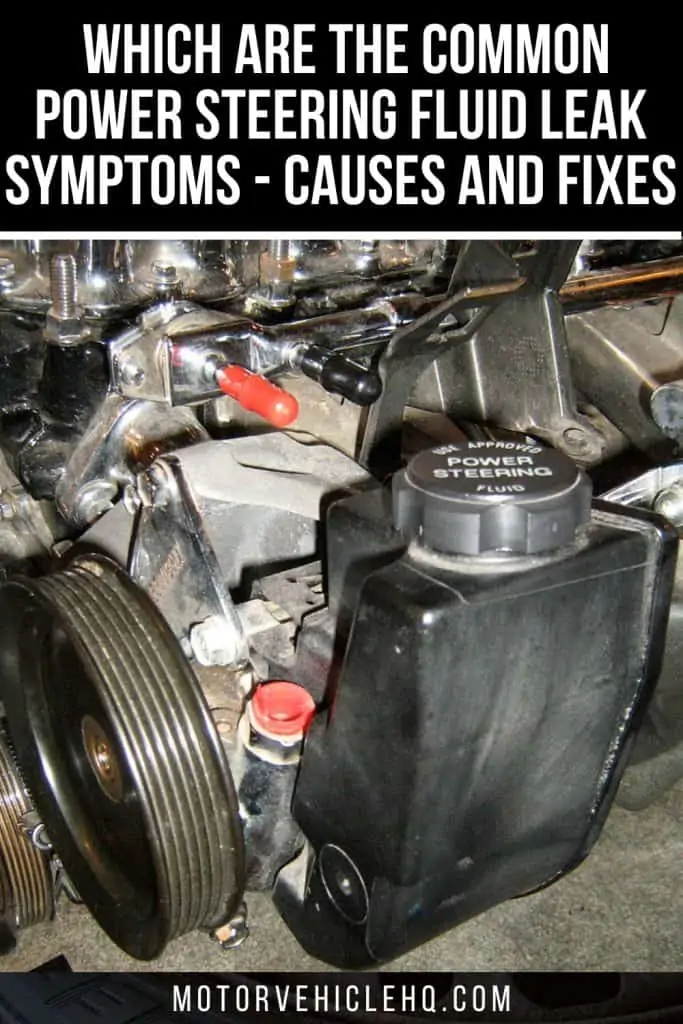We may take power steering for granted more than any other feature of the modern car. Finally, the effort required to move the wheels won’t require a strenuous arm workout.
But when the time comes for our car to be serviced, we frequently neglect its requirements. The batteries, the filters, the coolant, the tires, and the engine oil.
The hydraulic fluids that operate your assisted steering, though, about them? What can you do if there is a power steering fluid leak when it is too late?
Have you ever noticed how slightly firm your steering wheel feels? It might turn a little jerkily or make odd noises when it does. The worst-case scenario is that your power steering could fail in the middle of a drive.
When you discover that you can’t spin the wheel as well as you used to, those are ideal conditions for an accident.
The power steering fluid needs tender loving care and attention much like anything else on a vehicle. Let’s attempt to learn more about a power steering fluid leak now.
An Overview of the Power Steering Fluid System
Before we get into more detail regarding a power steering fluid leak, we should first try to comprehend how the entire system functions.
Before we get into more detail regarding a power steering fluid leak, we should first try to comprehend how the entire system functions.
Nowadays, the majority of cars have some type of hydraulic steering assistance. Your steering wheel inputs are magnified by a system of hydraulic actuators.
As a result, doing tasks is simplified and takes less arm strength. The power steering pump, which is powered by the engine via the drive belt or serpentine belt, generates the pressure.
The power steering column by Samf4u / CC BY-SA 4.0. Have you ever noticed how your steering wheel feels just a little bit firm? It might make strange noises or turn a little jerkily. In the worst situation, your power steering could stop working in the middle of a drive.
The steering gear is subjected to hydraulic pressure thanks to the pump’s connection to a hydraulic actuator or cylinder. The wheels will then be turned left and right, accordingly. The steering wheel itself can control several valves in a power steering system that uses hydraulic assistance.
This enables it to manage fluid flow. After that, the flow can transfer pressure to the cylinders and actuators. Therefore, the main advantage is that turning the wheel doesn’t require a lot of force.
The amount of twisting that the car’s wheels make can be considerably increased with a small jolt of the steering wheel. However, some more recent vehicles have advanced beyond hydraulic power steering.
Instead, they are employing electrical inputs to drive a motorized actuator when they use electric power steering. You won’t need any fluids in this situation. Know that your power steering fluids require a complete flush and replacement after a particular amount of time or mileage.
When Should the Power Steering Fluid Be Replenished?
This builds on the prior statement that you should replace it from our advice on power steering fluid leak. It behaves the same as other fluids in your cars, such as coolant, antifreeze, transmission fluid, brake fluid, and engine oil.
When getting your car maintained, this is something that should be done but is frequently neglected. Each car will have a certain timeline for when the power steering fluid has to be flushed and replaced, depending on the make and model.
You’ll need to pay close attention and occasionally refer to your owner’s manual. Power steering fluids have a lifespan that ranges from 50,000 to 100,000 miles on average. However, the majority of professionals advise replacing it if it has less than 50k miles.
Power steering fluid can be purchased for as little as $15 per bottle. The price will range from $100 to $250, also including labor if you choose to completely flush the old liquids and have them replaced at a workshop.
Which are the Most Common Types of Power Steering Fluids?
Now, there’s another important element to take into account when you think of topping up your power steering fluid leak. You won’t need to bother about just one kind of power steering fluid. Liquids come in three different varieties, each with unique characteristics.
No random bottle of liquid can be taken off the shelf. Return to your owner’s manual to find the recommended brand or kind of fluid. A hint may also be found on the reservoir’s lid or cap for the power steering fluid.
You won’t necessarily perish if you use unsuitable power steering fluids. However, they might pressurize in a different way than the power steering system of the car was intended to. It might also be deficient in some chemicals that could help the power steering loop’s internal workings.
In conclusion, utilizing the incorrect type of power steering fluid may cause early wear and tear. Then, what would have been a very inexpensive repair job becomes a catastrophically expensive one that affects the entire power steering system.
Speaking more specifically about those before-mentioned compounds, some fluid types or brands include regeneration characteristics. They might possess anti-corrosion qualities. It might aid in preventing the corrosion of the metallic steering system components.
A power steering fluid reservoir by CZmarlin. The stop-leak fluids you can put in your power steering fluid reservoir will give gaskets a new lease on life, enabling them to seal fractures and holes. However, they can’t fix big holes in your hoses or pump.
‘Stop-leak’ is unquestionably the best add-on function. These formulations contain plasticizers that can reinforce rubber tubing and seals and, as their name implies, prevent leaks from occurring.
1. The ATF Transmission Fluid
Yes, you heard correctly. Power steering fluid and gearbox fluid can be switched out in some vehicles. Typically, these fluids can be classified as Dexron, Mercon, ATF+4, or Type F subtypes.
However, alternative automatic transmission fluids with comparable compositions might also be utilized. ATF fluid is typically used in older cars from the 1970s and up to the 1990s with power steering systems. The majority of ATF-based power steering fluids are used in vehicles that were made in the US.
2. The Synthetic Hydraulic Fluid
This fluid is specifically designed for power steering and complies with ISO 7308 and DIN 51 524T3 specifications. These are frequently found on higher-performance versions or in the latter generations of post-2000 autos.
Most automakers in Europe and Japan use this kind of power steering fluid. Low temperatures enable the clear, streamlined flow of synthetic fluids. They could also try to lubricate the pump extensively to lower the friction there as well.
3. The Universally Used Power Steering Fluid
If the name isn’t obvious enough, this kind of fluid can currently be utilized in the majority of autos. In addition to compatibility, it offers a plethora of advantages on its own. These include lowering some components’ friction.
Additionally, they may contain the aforementioned compounds, which could stop corrosion, seal small leaks, and lessen the abrasion that metal sections of your steering experience. However, you should still make sure that your car can handle this type of universal fluid.
Why Does Power Steering Fluid Leak Occur?
We now have a solid understanding of what power steering is and how it works. We’ve since learned that there are several fluid types and that you need to get them serviced. However, the precise source of the power steering fluid leak is still unknown.
In any case, why is this happening? Time and usage are your adversaries, just like with many other reasons why a certain automotive component fails. The power steering in your car experiences a lot of wear and tear as it ages and is driven.
If you maintain your vehicle properly, you might stop a power steering fluid leak from happening. This demonstrates that all it takes to keep anything functioning smoothly for years to come is good upkeep. Your power steering fluid leak may have several root reasons if you investigate it a little closer. Here are a few instances:
1. Wearing Out Internal Components Including Seals, Tubing, and Others
Many components of your power steering system interact with your power steering fluid. These components might be the pump, hoses, tubing, seals, etc. The latter are typically constructed from biodegradable substances like rubberized polymers.
Steering wheel by Lukas 3z / CC BY-SA 4.0. You can usually tell when a lot of issues are about to arise by how the steering wheel feels in your hands. For instance, when you turn the wheel to the right, does it jerk left or come back to the center? When parking or driving slowly, it is the easiest to see.
As they consistently work to maintain pressure and circulate the flow of fluids, they may eventually wear out. They experience a great deal of pressured stress in addition to the hot engine and other mechanical components.
O-rings and seals might lose mass and form if your car hasn’t had a service in a while. In essence, they disintegrate into pieces and might come off. The power steering fluid then circulates them.
The chunks can jam specific areas of the power steering system, putting even greater strain on it, as you could imagine logs being pushed downstream by a river. Rubber hoses and tubing exposed to heat over time may, at the very least, get harder and crack.
2. Use of Power Steering Fluid That Is Contaminated
One of the main causes of a power steering fluid leak is the fluid’s state. O-rings, seals, or the fluid-carrying tubing itself may deteriorate, as we just mentioned. They will mix with the power steering fluid as they break down into bits.
They might taint the drinks. Metals like aluminum are used to make the steering rack overall. It may begin to release the fine aluminum powder into the fluid as it grinds and functions.
All of this may seem regular, yet objects like those will significantly alter the way fluids flow. We haven’t even talked about the possibility of dampness and water becoming stuck there.
The hydraulic strength of the power steering fluid will decrease over time as a result of water oxidation. In any case, tainted power steering fluid might result in blocks in the liquid’s flow. Not to mention the possibility of causing specific components, like the pump, to malfunction and spring a leak.
3. Use of Power Steering Fluid That Is Burnt Out
However, you should be aware that the fluid can eventually stop working on its own. Power steering fluids are subjected to extremely high hydraulic pressures. Additionally, it must pass through an ongoing heatwave caused by the engine and its environs.
The chemical composition of the power steering fluid can be spontaneously degraded with enough time and heat and pressure. It will transform into a thick, viscous sludge that could obstruct flow or eat away at rubber hoses and tubes.
What are the Symptoms of a Power Steering Fluid Leak?
The easiest approach to determine if your car has a power steering fluid leak is to look under it. Do you notice a crimson puddle there? That is power steering fluid, then. To be more precise, there are undoubtedly additional locations where you can find the source of the leak.
The pump, which is located close to the front and bottom of the car, would be the first point of failure. If not, the hoses and tubing that transport the power steering fluid may be damaged in part or in full.
These are positioned between the steering rack or gear and the pump. After years of abuse, they might have caved in. The actual steering rack is the last possible location to examine for leaks.
Here, seals are exposed to a lot of accumulated dirt, filth, and road debris. The seals over there may deteriorate as a result of this. In addition to this, your power steering fluid may start acting strangely, which is another red flag that it may have sprung a leak.
The single-spoke safety steering wheel by Joe Mabel / CC BY-SA 3.0. Any difficulty turning the wheel is a surefire indication that your car’s steering isn’t working properly. If there is not enough hydraulic fluid inside, the wheel may become rigid, which is an indication of a leak.
1. A Hard-to-Turn Steering Wheel
Any trouble turning the wheel is a certain sign that there is a problem with the steering in your car. The wheel may stiffen up if there is not enough hydraulic fluid within, which is a sign of a leak.
Even turning it a few degrees to the left or right would require a lot of work. The power steering cannot pressurize sufficiently since there aren’t enough liquids to convey hydraulic pressure.
2. Vibrating, Jerking, or a Locking Steering Wheel
Once more, the way the steering wheel feels in your hands gives you a good indication of many impending problems. For instance, does the wheel jerk left or return to the center when you turn it to the right? It is most obvious when driving slowly, like when parking.
Has the wheel been unduly vibrating, or has it entirely locked up? These are all very obvious indications that there may be, among other things, insufficient hydraulically-pressured power steering fluids.
3. The Wheel Turns Producing Unusual Sounds
We now have sounds to listen to as we conclude the “can you feel it through the wheel” sensations. The steering of a car should be completely silent. These noises are only audible due to the power steering pump.
This creates pressure and circulates fluid throughout the system. Well, your pump can be pressurizing a lot of air if there isn’t enough power steering fluid to move around. Typically, when this occurs, you’ll hear whistling or whining sounds.
4. A Low Level of Power Steering Fluids
Anyone who took driver instruction in high school is aware of the need to routinely check the coolant and oil levels in your vehicle. However, checking your brake fluid levels is as crucial.
To help you drive safely, your car’s power steering needs the optimum amount of fuel. Insufficient fluid levels might cause damage to the power steering rack, which could necessitate costly repairs.
There is a level indication inside your power steering reservoir, which you may see if you look inside. There is a good likelihood that you have a leak if the fluid level is too low.
It’s crucial to keep your fluid levels at the right levels. If you use too much fluid, the pressure could cause your valves and seals to fail. There could not be enough force applied to spin the steering wheel if you don’t apply enough fluid. It is critical to promptly change your brake fluid.
Almost often, liquid under your vehicle is a valid reason for concern. Never make the mistake of thinking it is just regular engine oil. Locate the leak’s origin and the type of oil that is escaping the car at all times.
You should clean the reservoir and the pipes leading to it, look for cracks, and make sure the leak is not originating from your power steering. Look closely at your lines to determine where the fluid is coming from.
Your car contains numerous distinct types of oil, and you can distinguish them by their color and scent. The brake fluid and automatic gearbox fluid are both reddish-brown. Brake fluid will become more uniformly brown as it ages.
Automatic transmission fluid (ATF) by Hymn62 / CC BY-SA 4.0. In some cars, you can swap out the gearbox and power steering fluid. Usually, these fluids fall into the Dexron, Mercon, ATF+4, or Type F subtype categories.
Thicker than motor oil, both brake and gearbox fluids. Both of them have an oily texture. The aroma of the steering fluid is slightly sweet and baked marshmallow-like. The smell of transmission fluid is more akin to gasoline.
How Do I Fix a Power Steering Fluid Leak?
So, exactly how do we resolve a power steering fluid leak? Therefore, you should immediately stop driving your car if you experience any of the signs of fluid leakage that we previously listed.
If your power steering malfunctions when you are moving at a high rate of speed, it is not only dangerous but also expensive. Be aware that trying to push a power steering with insufficient fluids could severely damage the numerous parts related to it. These include the steering rack and the pump.
As they exert all of their effort to pressurize the tiny volume of fluids inside, they will become quite exhausted. In this manner, you will end up with entirely unneeded repair costs of at least $1,000.
Consider how terrible the leak is once you’ve given it enough consideration to inspect your car and locate it. Find a bottle of “stop-leak” additive at the closest auto parts store as soon as a leak starts to show up.
However, keep in mind that stop-leaks only function on tiny leaks. For example, larger holes or gashes in the tubing cannot simply be repaired with stop-leak additives.
It softens and then inflates seals and O-rings, which are typically the primary culprits in leaks, to assist cure and repairing them. This should partially stop the leak so that you can drive to a shop and get it looked at.
How Much Does Repairing a Power Steering Fluid Leak Cost?
They are the least expensive method of repairing a leak temporarily for stop-leak additives. Depending on its size, a bottle can cost anywhere from $5 to $10. Additional additives in some stop-leaks can also revive the power steering fluids.
A stop-leak additive is a relatively easy repair, although it does come with a time cost. All you have to do is locate the reservoir for the power steering fluid in the engine compartment. Then fill the reservoir with the specified amount of stop-leak.
But be careful not to add too many additives. According to the amount of power steering fluids you have, calculate how much stop-leak to add by reading the instructions on the bottle.
Simply replace the reservoir’s cap after that and start your car. Depending on how serious it is, the leak may not stop for several hours or even up to a few days. Driving gives the stop-leak additional opportunity to circulate and repair the internal damage.
A Power Steering Fluid Leak: How to Stop It from Re-Occurring
Even if they are miraculous, stop-leak additives only really excel at little leaks. What about the power steering fluid leak that is flowing out? Unfortunately, to determine precisely what is causing the leak, you will need to have your car properly evaluated.
Power steering Stop Leak Solutions can be used to repair the seals and O-rings in the power steering system. With time, these seals will shrink and crack. Some leaks start the power steering fluid leaks.
We said earlier that several parts of the steering system as a whole are capable of developing leaks. While a bottle of stop-leak might just cost you a filling lunch, major leaks will cost more.
Let’s imagine the leak is so severe that the entire power steering system needs to be replaced. For the majority of modern autos, this will typically cost you between $500 and $650. Just wait until the neighborhood technician tells you that you require a brand-new steering rack if you think it is painful.
Your wallet will most likely be $1,000 or lighter as a result. That is what may occur if you overstress your steering by continuing to drive while there is a fluid leak nearby.
Instead of replacing the whole device, you can save a lot of money by diagnosing and replacing individual parts. For instance, the power steering pump is frequently the source of leaks. You should budget about $200 for one of them only for the pump.
In contrast, a hose or tube can be purchased for between $60 and $150. If all it needs is a new pressure valve, you can get one for as little as $10. By the way, labor is not included in any of the costs we have listed thus far. Just to be safe, add $200 to this.
Is It Safe to Drive a Car with a Power Steering Fluid Leak?
Power steering didn’t exist until the 1950s, as we previously stated. Drivers first learned to operate vehicles without power steering, therefore any vintage car built before that doesn’t have it. So even when your power steering isn’t working, you can still operate your vehicle mechanically and practically.
Your power steering rack will stop working properly if you let your power steering fluid leak get too bad. It will now be exceedingly challenging to steer. Ironically, maneuvering your car will be considerably more difficult at low speeds. Depending on the type of vehicle you drive, parking and turning will be next to impossible.
Long periods of driving without power steering fluid can harm the pump. The pump will overheat because there is no longer any fluid inside of it. Despite the absence of fluid, the pump does not turn off. It can be expensive to have this fixed. The price to replace a power steering pump with a new one might range from $500 to $700.
If all else is equal, fixing a power steering leak is preferable to ignoring it.
What Harm Could a Power Steering Stop Leak Do to Your Car?
The seals and O-rings in the power steering system can be revived with the help of power steering Stop Leak Solutions. These seals will shrink and crack with time. The leaks that cause the power steering fluid to leak originate there.
Gaskets will be revitalized by the stop-leak fluids you can add to your power steering fluid reservoir, enabling them to close holes and cracks. They are unable to repair significant holes in your hoses or pump, though.
When attempting to cure leaks, you must make sure you’re applying the proper quantity of power steering stop leak. The amount you need to use will always be specified in the instructions. Your power steering system could suffer major harm if you utilize it excessively.
A stop-leak solution won’t work if your pump housing or pump bearings are leaking. These will need to be corrected by a professional doing a power steering leak repair.
A typical car engine by Carolla / CC BY-SA 3.0. Although it takes time, a stop-leak additive is a pretty simple fix. Finding the power steering fluid reservoir in the engine compartment is all that is required. The prescribed amount of stop-leak should then be poured into the reservoir.
How Long Does the Power Steering Stop Leak Take to Start Operating?
Power steering stop leaks and comparable remedies don’t work right away to stop leaks in your power steering system. About three quarts of power steering fluid can be treated with one bottle. The issue is that you might need to use multiple applications to see any outcomes. And if it’s working, it can take a while before you see any changes.
The stop-leak solution is a chemical process that takes time to complete because it restores your O-rings. It doesn’t work instantly as some other sealants do. You need to be careful and patient while making sure you strictly adhere to the instructions on the bottle for the particular brand you purchased.
Because they didn’t adhere to the instructions precisely, some drivers have experienced issues in the past while using power steering Stop Leak solutions. In these situations, probably, you won’t get the outcomes you want.
The Conclusion
Keep in mind that once the repairs are finished, it is advised that you get a full flush and replacement while you’re doing all of that. It will continue to run more efficiently if there is a bottle of new power steering fluid inside.
The cost of labor for a professional flush and change job at a garage ranges from $100 to $250. Overall, this situation demonstrates that the power steering fluid leak is no laughing matter and that it is something that you should take care of right now.
When a leak appears, be prepared with stop-leak remedies to perhaps stop or at least slow it down. You should have it checked to determine which parts of the steering are to blame if it still leaks or if the fluid leaks are too severe.
The culprit might be hoses and tubing, pumps, or the entire steering rack. Then, to stop that leak from happening again, get these fixed or replaced. With a little caution, you might still have avoided a catastrophe.
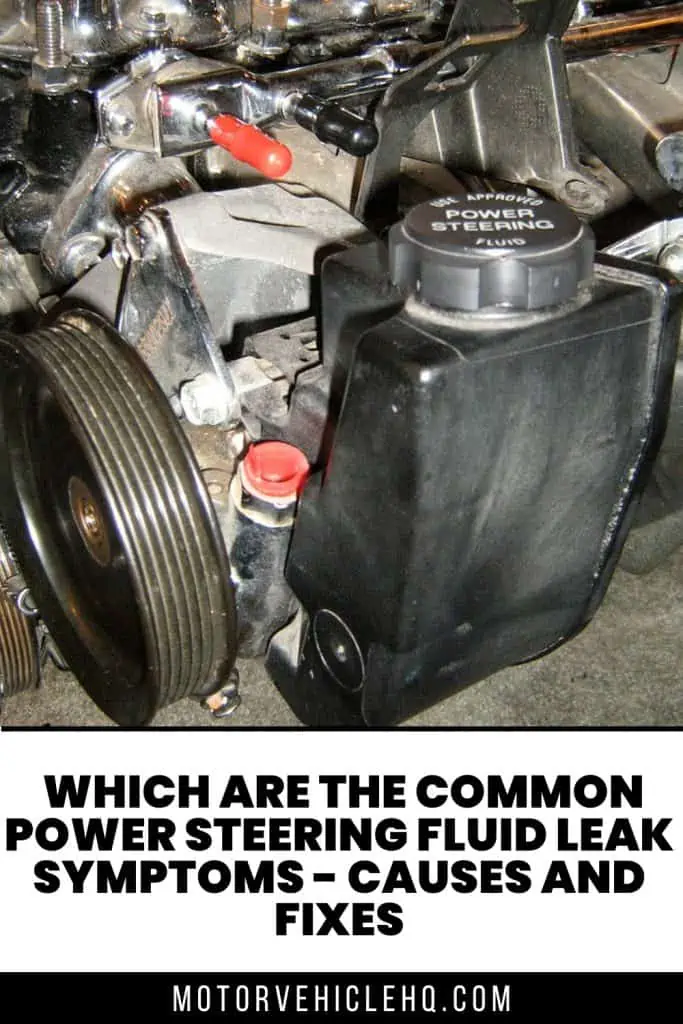
A power steering fluid reservoir by CZmarlin

Jim Wicks is the founder of MotorVehicleHQ. With over two decades of experience in the automotive industry and a degree in Automotive Technology, Jim is a certified car expert who has worked in various roles ranging from a mechanic, car dealership manager, to a racing car driver. He has owned more than 20 cars over the past 15 years. Ask him about any vehicle you see on the road and he can tell you the make, model and year. He loves the aesthetics of all things cars, and keeps his vehicles in pristine condition.
In his free time, Jim enjoys getting his hands dirty under the hood of a classic car or taking long drives along the country roads. His favorite car? A 1967 Shelby GT500, a true classic that, according to Jim, “represents the pure essence of American muscle.”
